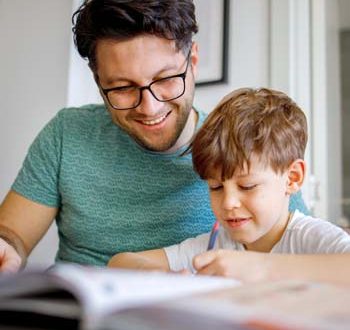
We all know that feeling of wanting to share some exciting news with our friends and family, when you are ‘bursting to tell’ someone something, well kids often feel like that about sharing information online. The obvious and important difference with the online element of things is, of course, safety. What are the things you need to be helping your child to consider when it comes to sharing content online?
As adults we know that the online and offline worlds are very different places and that caution and a sense of perspective are needed when spending time online . This is something that definitely needs to be regularly talked about with children of all ages and younger children in particular. Given their age and level of maturity kids can sometimes get very caught up in the excitement of sharing content online and as a result can forget or just not even consider the safety element of things. For example is it only people I know and who know me who are going to see what I share? Also, kids don’t always consider the long term implications of what they are sharing and often think that things can be easily deleted or permanently removed from the internet. The reality is that it can be very difficult to have content permanently removed from the online space. One of the most complex concepts to try and communicate about with children is their digital footprint. Essentially that their online behaviour and the content they share now could have far reaching affects for them.
One thing that we find helpful when we talk to children at our seminars in schools is what we call ‘The Grandma’ Rule. Before you post or share something online or via a messaging app take a minute to consider, is this something that I would share with my grandma? When we ask this is a group setting with kids it’s amazing to see the reaction! Taking even a very short time to consider is what I am sharing something I would have no problem with those close to me knowing about is certainly a great leveller!
It’s a good idea to regularly talk to your child about what they are experiencing when they are online, or what conversations and interactions they are having via messaging apps. Needless to say these chats need to be age appropriate and can be a little more challenging when it comes to teens. If you have started these conversations on staying safe online from an early age then it is likely that your child is used to them and knows that your interest is based on concern and that you want them to stay safe and make smart choices when they are online. When it comes to this conversation with teens there is a delicate balance to be struck between helping them to stay safe and allowing them privacy. Having an open communication style is a great help when it comes to this conversation. Make sure that your teenager knows that it is ok to come to you without being afraid of a punishment or confiscation of a digital device. Encourage your teenager to exercise the same caution they would when they are offline in relation to posting and sharing content. If they wouldn’t share that news with someone they don’t know offline then why would they do that online, where there are far more potential pitfalls?
Regular and consistent conversations about staying safe online and exercising caution are key!
Explore Zeeko’s Home Page to discover our mission on the About Us Page, innovative Phone Blocking System, and engaging Phoenix Quest 10 programme. We provide Internet Safety Seminars, the Zeeko Report Card, and the Magical Leaders Choose Country initiative, alongside insights from our Digital Trend Report. Stay connected with us on Facebook and Instagram for updates.

